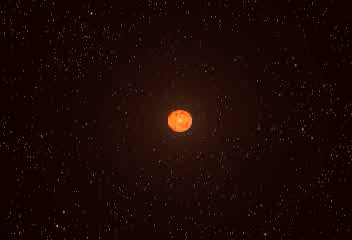First, this guy has the instructions I followed:
captnswing
However, it didn't work entirely as advertised. I ran the configure as advertised:
./configure --enable-framework=/Library/Frameworks \
--enable-universalsdk=/ \
MACOSX_DEPLOYMENT_TARGET=10.5 \
--with-universal-archs=all \
--with-readline-dir=/usr/local
then the make install, but /usr/local/bin/python pointed to the wrong place, so I replaced the symbolic link in my python path with the correct one:
sudo rm /Library/Frameworks/Python.framework/Versions/2.6/bin/python
sudo ln -s /Library/Frameworks/Python.framework/Versions/2.6/bin/python-64 /Library/Frameworks/Python.framework/Versions/2.6/bin/python
Now python is 64 bit:
eta ~$ python -c "import sys; print sys.maxint"
9223372036854775807
I haven't checked whether it works yet though...
Update: Had to reinstall with gnu readline installed. Also have to install PyQt4 and might have to recompile numpy...
numpy won't compile with python 2.6.2:
C compiler: gcc -arch i386 -arch ppc -arch ppc64 -arch x86_64 -isysroot / -fno-strict-aliasing -fno-common -dynamic -DNDEBUG -g -fwrapv -O3 -Wall -Wstrict-prototypes
compile options: '-Inumpy/core/include -Ibuild/src.macosx-10.5-universal-2.6/numpy/core/include/numpy -Inumpy/core/src -Inumpy/core/include -I/Library/Frameworks/Python.framework/Versions/2.6/include/python2.6 -c'
gcc: build/src.macosx-10.5-universal-2.6/numpy/core/src/_sortmodule.c
In file included from numpy/core/include/numpy/ndarrayobject.h:26,
from numpy/core/include/numpy/noprefix.h:7,
from numpy/core/src/_sortmodule.c.src:29:
numpy/core/include/numpy/npy_endian.h:33:10: error: #error Unknown CPU: can not set endianness
lipo: can't figure out the architecture type of: /var/folders/ni/ni+DtdqFGMeSMH13AvkNkU+++TI/-Tmp-//cceaWIvZ.out
In file included from numpy/core/include/numpy/ndarrayobject.h:26,
from numpy/core/include/numpy/noprefix.h:7,
from numpy/core/src/_sortmodule.c.src:29:
numpy/core/include/numpy/npy_endian.h:33:10: error: #error Unknown CPU: can not set endianness
lipo: can't figure out the architecture type of: /var/folders/ni/ni+DtdqFGMeSMH13AvkNkU+++TI/-Tmp-//cceaWIvZ.out
error: Command "gcc -arch i386 -arch ppc -arch ppc64 -arch x86_64 -isysroot / -fno-strict-aliasing -fno-common -dynamic -DNDEBUG -g -fwrapv -O3 -Wall -Wstrict-prototypes -Inumpy/core/include -Ibuild/src.macosx-10.5-universal-2.6/numpy/core/include/numpy -Inumpy/core/src -Inumpy/core/include -I/Library/Frameworks/Python.framework/Versions/2.6/include/python2.6 -c build/src.macosx-10.5-universal-2.6/numpy/core/src/_sortmodule.c -o build/temp.macosx-10.5-universal-2.6/build/src.macosx-10.5-universal-2.6/numpy/core/src/_sortmodule.o" failed with exit status 1
That sucks.



